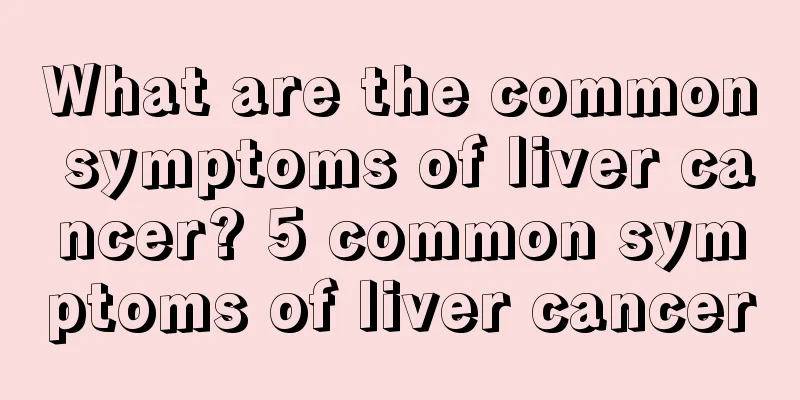Can laryngeal cancer be cured by surgery?

|
There are many surgical treatments for laryngeal cancer, which are mainly designed around long-term efficacy and functional recovery. At the same time, they are also improved as people's understanding of laryngeal cancer continues to improve. Historically, the choice of surgical methods for laryngeal cancer has also undergone a process of continuous change. The general principle at present is to appropriately consider functional recovery and reconstruction based on the premise of ensuring complete and clean resection of the lesion, based on the primary site of the cancer, clinical manifestations, and pathological types, because this is more beneficial to the patient's prognosis. Now, the selection and effects of commonly used surgical methods are briefly introduced. 1. Hemilaryngectomy and partial laryngectomy Depending on the location of the lesion, hemilaryngectomy includes anterolateral hemilaryngectomy, supraglottic horizontal hemilaryngectomy, anterolateral hemilaryngectomy and 3/4 laryngectomy. It is mainly suitable for patients whose vocal cord cancer has spread to the vocal process, one side of the vocal cord has exceeded the anterior commissure, the vocal cord cancer has developed to the subglottis, or one side of the vocal cord cancer has not disappeared after radiotherapy. Supraglottic horizontal hemilaryngectomy is suitable for patients with epiglottic cancer, laryngeal vestibule and ventricular zone cancer, epiglottic lingual surface and tongue root cancer, or epiglottic cancer that has not completely disappeared after radiotherapy. The reconstruction of laryngeal function is mainly for pronunciation and breathing. However, whether it is hemi-laryngectomy or partial laryngectomy, it must be done under the premise of complete removal of the tumor. Practice has shown that the 5-year survival rate after hemi-laryngectomy or partial laryngectomy is not inferior to that of total laryngectomy. In addition, some functions are retained. After a lot of practice, many doctors believe that patients with T2 and T3 laryngeal cancer can avoid total laryngectomy by choosing the method of partial resection. Its 3-year and 5-year survival rates are 78% and 58% respectively, while the 3-year and 5-year survival rates of total laryngectomy are 54%. However, since this operation requires the preservation of some laryngeal tissue to varying degrees, it requires a certain amount of experience during the operation, especially in the estimation of the scope of the lesion, the determination of clinical staging and the design of the resection scope. Otherwise, the recurrence rate after surgery will increase. Many clinical scholars believe that the local recurrence rate of hemi-laryngectomy or partial laryngectomy is about 10%. Among the patients with recurrence, most of them are related to the original site of the cancer and the surgical method. From the perspective of site, the recurrence rate of transglottic type is the highest, 31%, and the recurrence rate of supraglottic resection is the highest, up to 43%. About 50% of recurrences have deep infiltration. 2. Total laryngectomy Total laryngectomy was first performed in 1873, and the first total laryngectomy for laryngeal cancer was successful. Since then, total laryngectomy has been considered a radical surgical procedure for laryngeal cancer and has always dominated clinical practice. Especially after the advent of antibiotics, the mortality rate of surgery has been greatly reduced, making its clinical application more extensive. Although hemi-laryngectomy and partial laryngectomy have been widely performed, total laryngectomy is still the main surgical method for laryngeal cancer treatment. Total laryngectomy is applicable to a wide range of patients, such as those with cancer occupying one or both vocal cords and fixed vocal cords; those with obvious invasion of the anterior commissure and possibly affecting the subglottic area; supraglottic ventricular cancer, epiglottal cancer, or subglottic cancer, and other types of malignant tumors of the larynx. The advantage of total laryngectomy is that the cancerous tissue is removed relatively thoroughly, and the chance of local recurrence is relatively small. Its disadvantages and shortcomings are that the surgery causes the patient to lose the larynx for life, lose normal speech, and cannot guarantee the normal physiological respiratory pathway, which is indeed regrettable for some patients with limited early lesions. In addition, the incidence of pharyngeal fistula after total laryngectomy can reach 14% to 17%, and about 50% of patients need to wear a tube for a long time. For the problem of postoperative aspiration, some patients need to go through a long period of training and adaptation to solve it, and sometimes they need to pay great patience and perseverance. These reductions in quality of life may directly affect the patient's quality of life and survival time. There are many factors that determine the efficacy of total laryngectomy, but they are mainly determined by the primary site of the tumor, clinical stage, histological type of the lesion, presence or absence of metastasis, the surgeon's clinical experience and the selected surgical procedure. (III) Treatment of cervical lymph nodes The ultimate main cause of death in laryngeal cancer patients is cervical lymph node metastasis or lung metastasis. Therefore, whether laryngeal cancer patients should undergo routine cervical lymph node dissection (neck dissection for short) is a practical problem faced in clinical practice. However, so far, there are still different opinions on how to choose the indications and when to perform neck dissection. Now we discuss various different opinions as follows. |
<<: What is the mid-term cure rate for laryngeal cancer
>>: Cure rate of middle and late stage laryngeal cancer
Recommend
Does ovarian removal prevent ovarian cancer?
Ovarian cancer is the fifth most deadly cancer in...
How to remove the hot pot smell from hair without washing it
Have you ever gone to a hot pot restaurant and ca...
What method can be used to recover faster from facial allergies?
For some people with allergic skin, once an aller...
Cryptophobia
Modern people often suffer from some psychologica...
What are the symptoms of acute enteritis
Acute enteritis is a type of digestive system dis...
Eating yellow rice frequently can cause liver cancer
In recent years, the incidence of liver cancer in...
Can fibroids be cured?
Can fibroids be cured? With the advancement of me...
Is Henoch-Schonlein purpura serious?
Allergies are a very common problem. Allergies ar...
What is instant sea cucumber
You can see many stores selling seafood around tr...
Is stomach cancer contagious? Generally, stomach cancer is not contagious
Helicobacter pylori infection is a common cause o...
How to generally care for glioma
Glioblastoma is a disease with great impact. Suff...
Can I eat with someone who has brain cancer?
Brain cancer patients are not contagious, it is n...
What is the function of the auricle?
I believe many people have wrong habits. This is ...
How does Purslane remove acne?
Many friends may not know about Purslane, they ju...
I woke up with pain in the middle of my spine
After a day of non-stop running and busyness, lyi...









